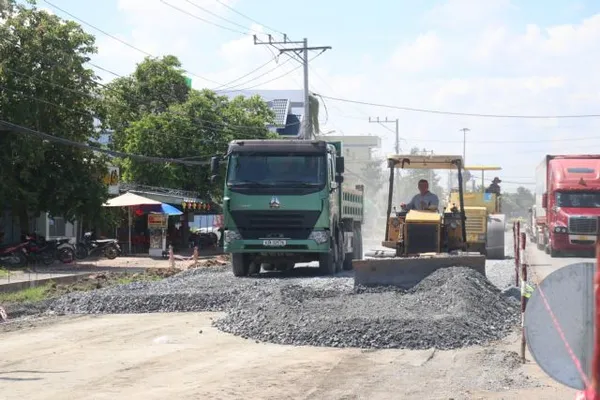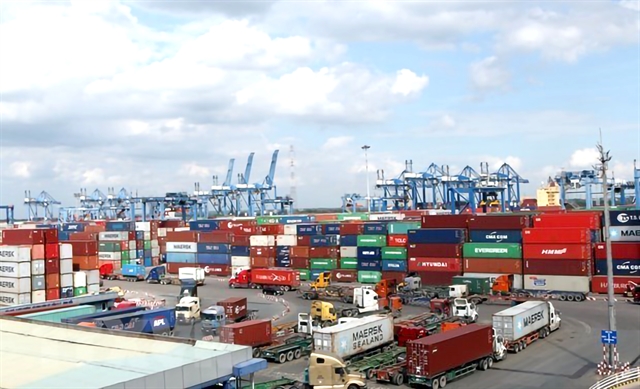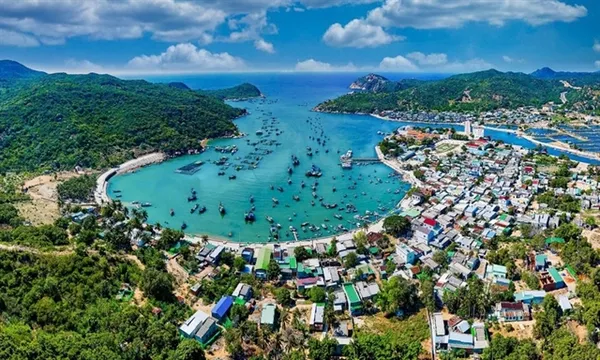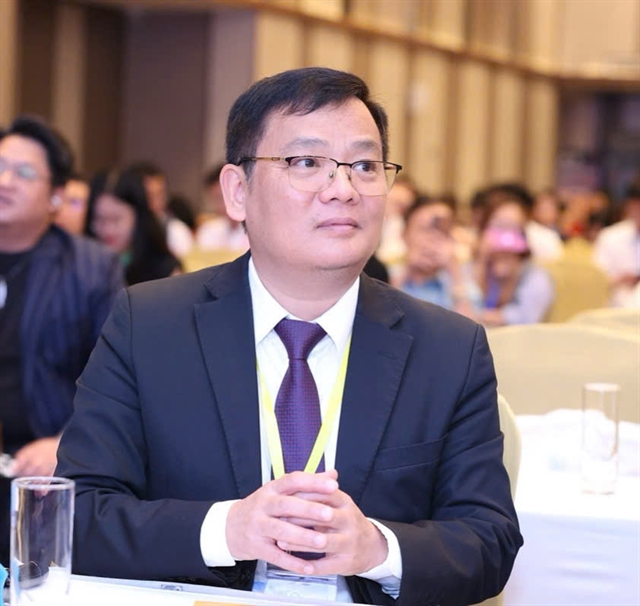 Economy
Economy

Việt Nam Maritime Corporation (VIMC) wants to build a VNĐ20 trillion (more than US$869 million) container terminal in Cần Giờ District in HCM City, but experts have raised concerns over the proposal.

|
| A view of Cát Lái Port in HCM City where VIMC plans a new VNĐ20 trillion container terminal in Cần Giờ District. — VNA/VNS Photo Tiến Lực |
HÀ NỘI — Việt Nam Maritime Corporation (VIMC) wants to build a VNĐ20 trillion (more than US$869 million) container terminal in Cần Giờ District in HCM City, but experts have raised concerns over the proposal.
State-owned VIMC has sent a document to the Ministry of Transport (MoT) proposing the investment policy for the terminal, saying Hiệp Phước and Tân Thuận ports, exploited by the Sài Gòn Port Joint Stock Company with more than 65 per cent of VIMC’s equity, were not able to meet demand.
According to VIMC, Hiệp Phước port was built to serve the relocation of Nhà Rồng- Khánh Hội port. However, the port project was not yet capable of receiving the entire volume of ships and displaced goods because the depth of the main channels in the port area was not stable, affecting the exploitation ability.
Tân Thuận port, which was in charge of loading and unloading goods such as iron and steel, fertiliser, rice, and containers with a throughput of about 10 million tonnes, was to be relocated to implement urban development plans for Thủ Thiêm No. 4 bridge project, it said.
Based on the master plan for the local seaport system in the 2021-2030 period, VIMC aims to develop a terminal port in Cần Giờ District.
It said the scope of the new port area included the land and water area to the left of the Sài Gòn - Vũng Tàu channel, the Bình Chánh area, the Ngã Bảy estuary, the Cái Mép River and the Gò Gia Island area. The scale included container, bulk cargo and international passenger terminals which could receive vessels with a tonnage of up to 150,000 DWT or larger, as well as passenger ships of 225,000 gross tonnage.
VIMC proposed the MoT to consider, support and approve the policy of allowing Sài Gòn Port to deploy an investment project in a container terminal in the Cần Giờ District.
The project will take place in two locations including the first adjacent to Cái Mép-Thị Vải Channel, in the territory of Phú Lợi Island, and the second adjacent to Sài Gòn-Vũng Tàu Channel, in Long Hoà Commune.
According to VIMC’s calculations, the wharf to be built at two locations will have a length of 1,500m. The first is expected to receive ships of up to 200,000 DWT and the second will receive ships of up to 150,000 DWT.
While the proposal of VIMC was waiting for a response, most experts on wharf and urban planning expressed disagreement with the project.
As an urban planning expert, architect Ngô Việt Sơn said: “Port construction must be in a regional connection while at present, most ports in urban areas of HCM City, Bà Rịa-Vũng Tàu and Long An have very poor transport infrastructure, pushing up commodity prices, increasing traffic jams and the risk of traffic accidents due to a lack of infrastructure.”
Therefore, he said old ports need to be upgraded rather than scattered investment placed in other new ports.
Sơn thought VIMC’s proposal lacks an urban vision as it did not consider the port in relation to the surroundings and had no environmental assessment that will greatly harm the biosphere reserve of the district.
The architect said the city needs a proposal for the container port ecosystem to function well with a comprehensive vision in relation to regional connectivity.
Sơn said to develop the marine economy, the city should have a regional cooperation mindset between the neighbouring port clusters, which should be also connected with the railway and highway inland to promote the role of the ports.
Agreeing with Sơn, Vũ Kim Cương, former deputy chief architect of the city said: “The city should exploit the full capacity of the available ports,” adding “Cần Giờ is a biosphere reserve that can develop ecological urban areas, the city should not let huge transport pass through it."
He suggested: “If a city wants to develop towards the sea, it can develop something to the east through Đồng Nai and Bà Rịa-Vũng Tàu.”
He added that as the available ports in the city were not operating at full capacity, the city should exploit the potential of hundreds of millions of tonnes per year before considering building a new port.
Regarding VIMC's proposal, MoT’s leaders told local media such a proposal of a container terminal in Can Gio was not suitable for the ministry to process, adding they will instruct VIMC to send the proposal to the People's Committee of HCM City and the Prime Minister for approval of the investment policy. — VNS




